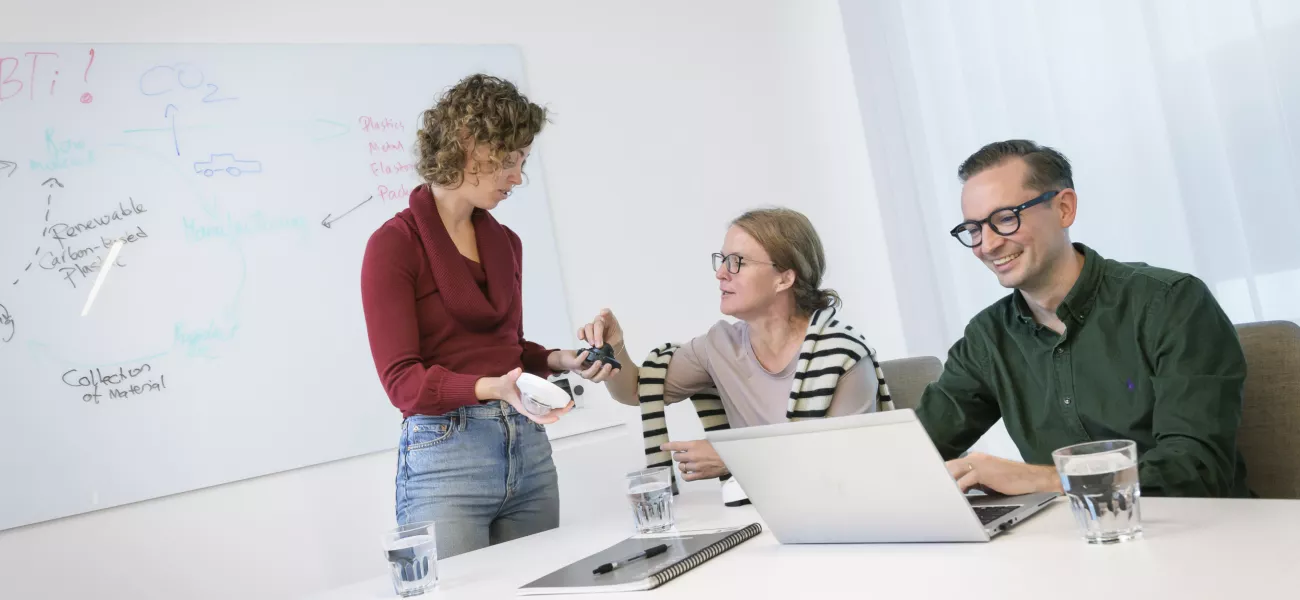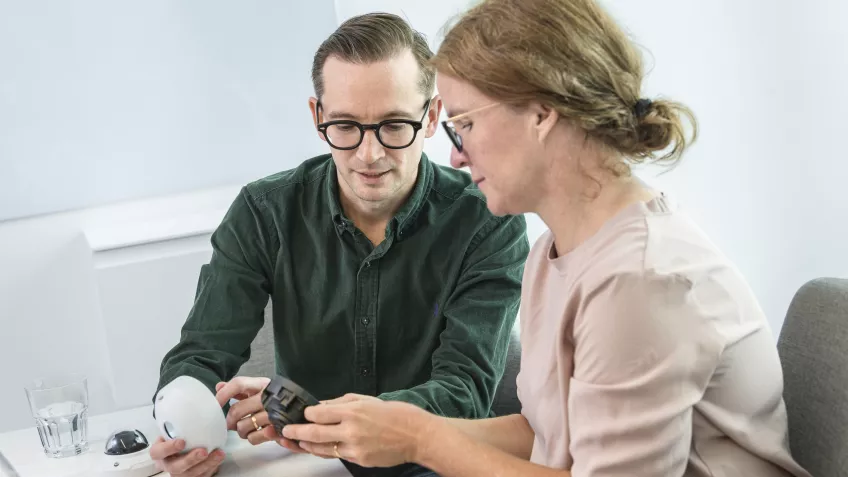
So-called eco-innovation is becoming essential for manufacturers to deliver on customer demands around sustainability. Alongside increasing customer awareness, pressure from non-governmental organizations (NGOs), the introduction of new legislative frameworks and industry-sponsored initiatives that advocate stricter guidelines for manufacturers are driving significant change.
The UN Sustainable Development Goals (SDGs) also play a part, setting out a global call to action to protect the planet and improve the lives and prospects of everyone, everywhere. Many organizations support the SDGs by taking proactive steps to make their business more sustainable.
At Axis, we recognize that our choices determine our future, so we focus on making good choices, for people and for the environment. We know that progress is about more than innovation, and we are working hard to minimize our environmental impact along the whole value chain.
Our goal is to turn our operations into the industry benchmark. As part of that journey, we’re focused on three strategic areas: beating climate change, protecting natural resources, and protecting ecosystems. Prioritizing green design, including using more recycled materials and phasing out hazardous substances, is part of our push to act responsibly and remain in line with the UN SDGs.
Adopting a green design mindset
In 2012, Axis created the Axis Green Design Group with the aim of encouraging more conscious sustainable choices within product design. The group brings together different competencies from design to environmental science – ranging from mechanical engineers and environmental engineers to expert engineers for materials, such as polymers, elastomers, and metal alloys.
To create a forum for discussion on how sustainability can be prioritized when designing new products as well as building green design into the Axis design manual, the group initiated green design guidelines and created a green design evaluation tool. The evaluation is divided into:
- Material selection
- Optimizing part design
- Optimizing design for manufacturing
- Optimizing disposal
Selecting sustainable materials is essential
“We want to protect ecosystems and are constantly striving to eliminate the use of hazardous substances, which may harm ecosystems or people, in our products,” says Ausra Reinap, Senior Environmental Engineer at Axis Communications and member of the Axis Green Design Group. “To do this we have implemented systematic procedures for product development, selection, and origin of materials, components, and packaging to ensure that these all meet our quality, functionality, and sustainability requirements.”
“Selecting sustainable materials is one of the core focus areas of green design,” Ausra continues. “We’re striving to use more recycled materials, such as renewable carbon-based plastics, and aim to minimize and, eventually, avoid the use of hazardous substances in our products. The development of cameras that are free of hazardous brominated and chlorinated flame retardants, without compromising fire safety, was a key milestone on our journey towards this goal.”
Phasing out hazardous materials is not a single step process. As a starting point, Axis pinpoints where these hazardous materials can be found in products. This requires both strong cooperation with suppliers and a robust system for mapping the status of every component, material, and product. Once hazardous materials have been identified within products, Axis works with current suppliers or finds new partners to source alternative options. This can take time, and some materials are more challenging to replace than others. It’s an ongoing process as there is a constant pipeline of innovative new products which require compliance screening.
Axis has a list of banned and restricted substances, including both substances that are already regulated by law and substances that aren’t restricted yet but will likely be so in future. “The list includes plasticizers as well as brominated and chlorinated flame retardants - or BFRs and CFRs as we call them. It’s very important to us to not just wait for legislation, but rather be one step ahead,” Ausra explains. “This proactivity is a competitive advantage, ensuring we are ready for upcoming legal regulations, creating a more robust business and enabling us to offer customers products that are free from hazardous substances.”
Going beyond materials
To minimize environmental impact and waste, we need to consider not only the choice of materials we are using but also how we are designing a product. Instead of thinking in a linear way and using new material resources, we need to start thinking in a more circular way where resources used can be minimized and reused.

Reducing the number of parts and weight is essential. Less material means using fewer resources as well as reducing environmental impact – and costs – from transportation.
Making the right material choices as well as making assembly and disassembly easier will simplify repair, reuse, and recycling. “Optimally, we’d have a modular design that is easy to build, repair and recycle as this enables a circular approach,” explains Johan Widerdal, Specialist Engineer Mechanics at Axis Communications and Axis Green Design Group member.
Johan continues, “We’re educating ourselves and investigating how best to design products with the right materials for recycling in a circular economy, as well as looking into extending product life cycles through smart reuse, repair, and remanufacturing.”
Prioritizing quality and sustainability
Switching to sustainable alternatives is imperative, yet manufacturers must guarantee that more sustainable products offer the same high quality as traditional materials. Testing is key.
“New materials are tested against technical requirements and standards to ensure they meet our requirements as well as all legal requirements,” explains Jonna Lagerblad, Senior Mechanical Engineer at Axis Communications and member of the Axis Green Design Group. “Testing must be thorough for all new materials. And it has proven that sustainable products can be just as good – if not better – than their plastic counterparts in terms of longevity and durability.”
Rigorous testing is applied to all components. They must comply with corresponding technical requirements such as UL in order to be used: safety cannot be jeopardized in favor of sustainability.
Constantly working towards green(er) design
“Green design is a rather wide concept that focuses on how we can minimize our environmental impact,” explains Ausra, “throughout the entire product life cycle. It’s an ongoing focus for us at Axis.”
In 2023, Axis focused on increasing its use of renewable carbon-based plastics. This involved improving the methodology used for mapping renewable carbon plastic content within products, as well as setting up training for the Axis R&D organization to encourage greater use of renewable materials. “We know that selecting recycled materials can be a challenge. This is mainly because there are still limited renewable carbon materials that fulfill technical requirements, especially the strict UL standards which are crucial in the USA and Canada”, says Jonna.
Over 2023, renewable carbon-based content share of the total plastic consumption stood at 11 percent. 71 percent of all cameras launched in 2023 contain recycled and/or biobased and/or carbon capture-based plastics. 74 percent of all network cameras launched in the same year were BFR/CFR-free. In total, approximately 85 percent of Axis products launched in 2023 were PVC free, which is a decrease from the 90 percent of 2022. This can be attributed to a new camera series requiring longer cables, of which PVC is an element.
Next year, the Axis Green Design Group has ambitious targets to reduce both BFR and CFR. The goal is that all cameras launched in 2024 will be BFR/CFR-free, and all Axis designed products launched in 2025 should be PVC/BFR/CFR-free. Taking a step back, Axis has stated its target of achieving more than 20 percent renewable carbon-based plastic of all plastic content in all Axis designed products launched in 2024. Sixteen products launched in 2023 had more than 20 percent renewable carbon-based plastic.
Crucial to take responsibility
Ausra concludes: “As a manufacturer today, it’s crucial that you take responsibility for sustainability, and green design is necessary to be a credible supplier. Axis has very high ambitions and if our ambition is to be the industry leader, we must reduce our environmental impact throughout the entire product life cycle and through the whole value chain.”
